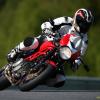The Pace 2.0 (inspirerende om trygg og morsom kjøring)
-
Fremtidige hendelser
Ingen kommende hendelser funnet -
Aktive Tråder
-
Da snappa jeg rommet til TMoen😎
-
Av stoppitide · Skrevet
God bedring 👍 jeg håper rehabilitering blir vellykket og at vi sees snart. (sitte på med en Multistrada?) -
God bedring Torbjørn
-
Heisan, Igår hadde jeg en ulykke da jeg jobbet med huset hjemme. Det går bra med meg nå, men desverre har jeg noen skader som ikke blir bra før turen til Vågslid. Dermed blir det helt uaktuelt å bli med. Jeg har nettop kontaktet hotellet og avbestilt mitt rom. Dette var leit og jeg har gledet meg til turen! Kanskje det gir åpning for noen andre som kan ta det ledige rommet? Ønsker dere alle en riktig god tur!!! Torbjørn
-
Av stoppitide · Skrevet
https://www.ducati.com/ww/en/bikes/panigale/panigale-v4 https://www.ducati.com/ww/en/bikes/panigale/panigale-v4/engine?openTechSpec=true DÆVEN!!!
-





Anbefalte innlegg